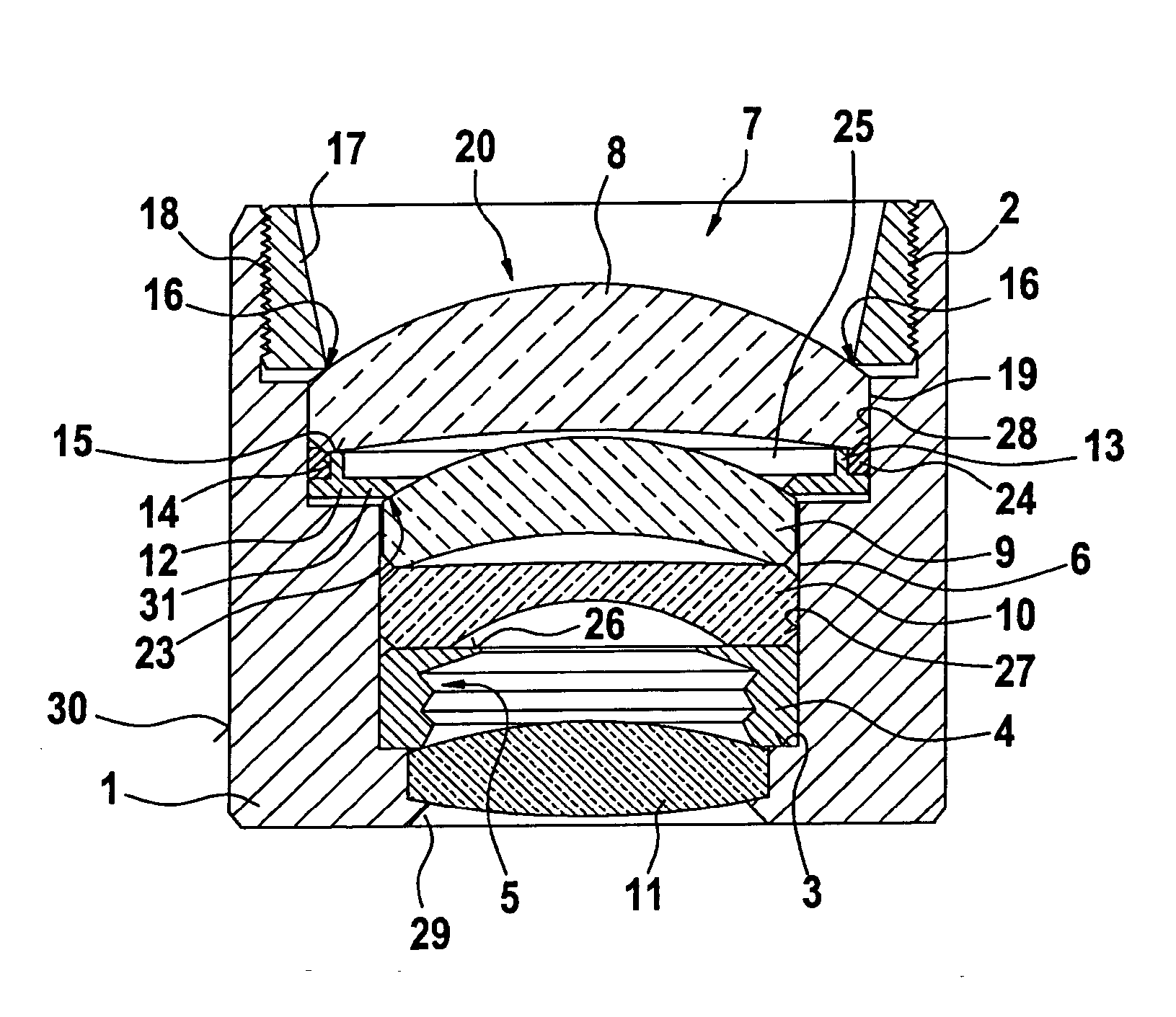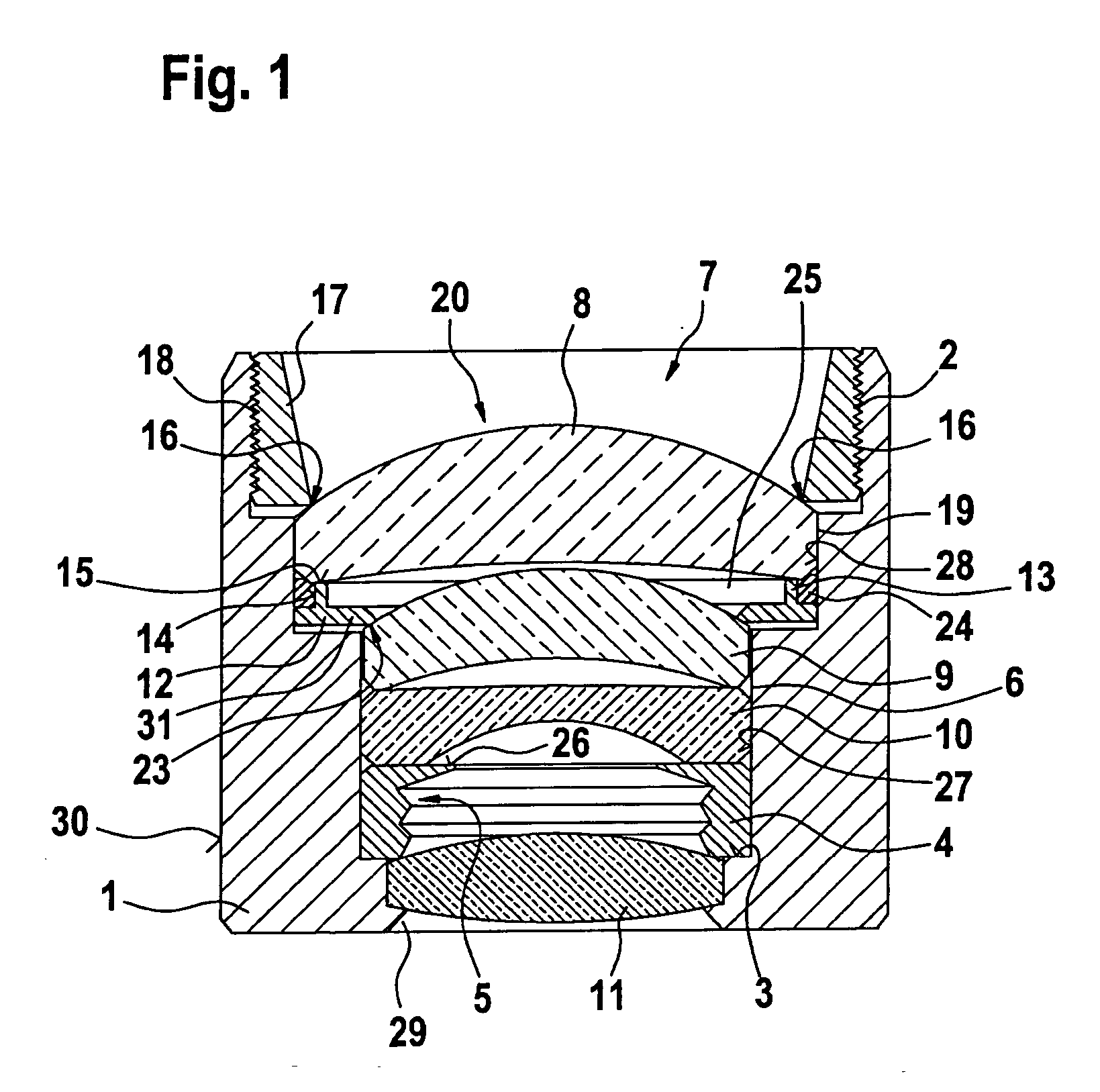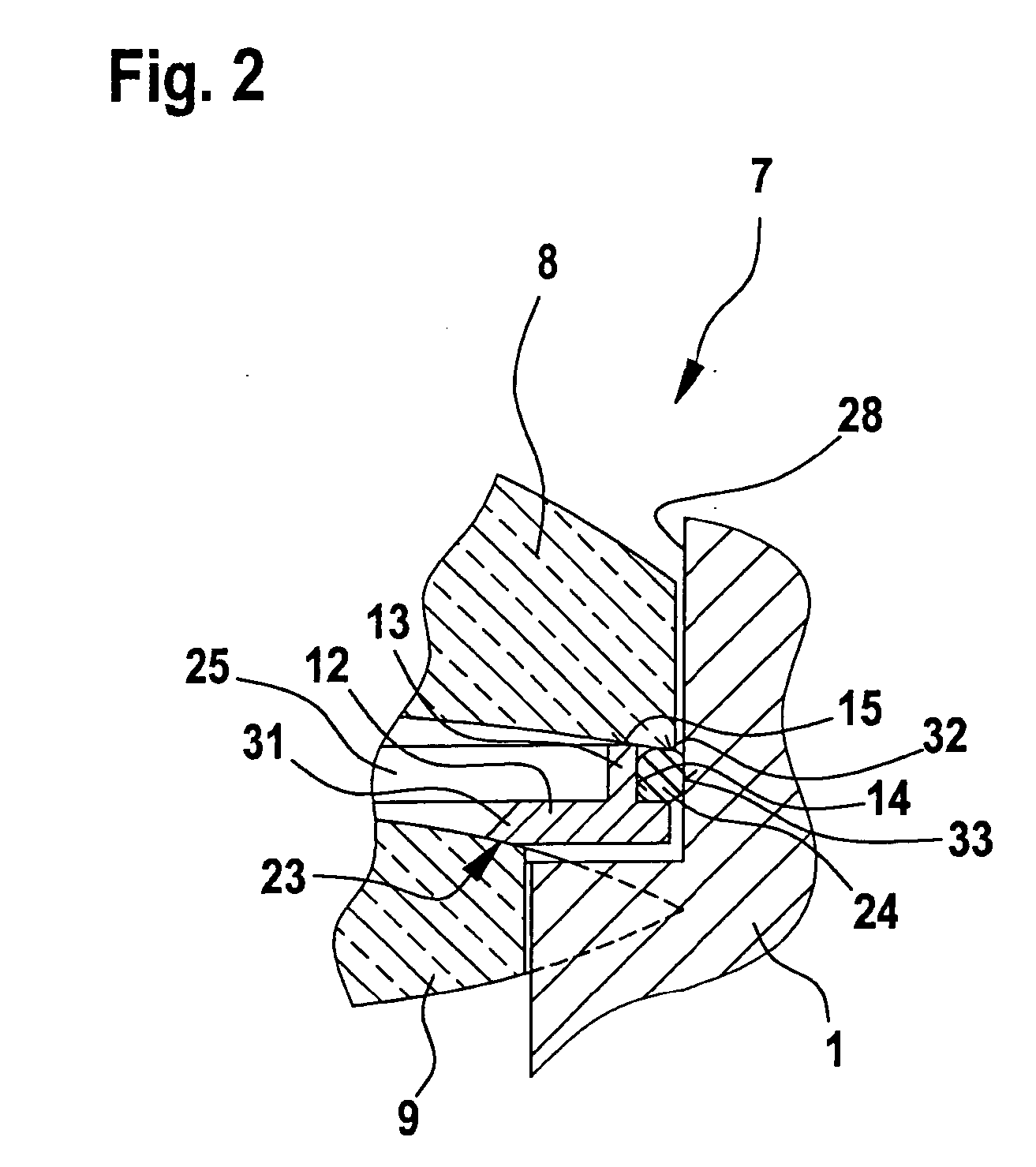Compound Lens Having a Sealing Configuration Suitable For Motor Vehicles
a technology of compound lens and sealing configuration, which is applied in the direction of mountings, instruments, data recording, etc., can solve the problems of dew formation in the optical path, degradation of image quality, and high mechanical stress on the camera module used in the operation of the motor vehicle, so as to achieve cost-effective assembly and precise setting of nominal clearance
- Summary
- Abstract
- Description
- Claims
- Application Information
AI Technical Summary
Benefits of technology
Problems solved by technology
Method used
Image
Examples
Embodiment Construction
[0012]FIG. 1 shows a compound lens in whose tubular housing 1 a lens stack 7 is inset. Tubular housing 1 includes a threaded section 2, in which a securing ring 17 is screwed into position. Securing ring 17 includes an external thread 18 which is complementary to threaded section 2 and which fixes a first lens 8 (front lens) of lens stack 7 in position in tubular housing 1. Lens stack 7, which is accommodated in tubular housing 1, encompasses first lens 8 (front lens) already mentioned, a subjacent second lens 9, another third lens 10, as well as a fourth lens 11.
[0013] Hermetically closing an aperture 29 is fourth lens 11, which is inset at the bottom of tubular housing 1. Located above fourth lens 11 is a diaphragm ring 4, which may have a shaping 5 adapted to the particular optical application. On its upper side, diaphragm ring 4 has a plane face 26, on which a third lens 10 rests flat. A second, convexly and concavely curved lens 9 rests on third lens 10. Second lens 9 and thir...
PUM
| Property | Measurement | Unit |
|---|---|---|
| resilient section | aaaaa | aaaaa |
| mechanical stresses | aaaaa | aaaaa |
| temperature | aaaaa | aaaaa |
Abstract
Description
Claims
Application Information
 Login to View More
Login to View More - R&D
- Intellectual Property
- Life Sciences
- Materials
- Tech Scout
- Unparalleled Data Quality
- Higher Quality Content
- 60% Fewer Hallucinations
Browse by: Latest US Patents, China's latest patents, Technical Efficacy Thesaurus, Application Domain, Technology Topic, Popular Technical Reports.
© 2025 PatSnap. All rights reserved.Legal|Privacy policy|Modern Slavery Act Transparency Statement|Sitemap|About US| Contact US: help@patsnap.com



